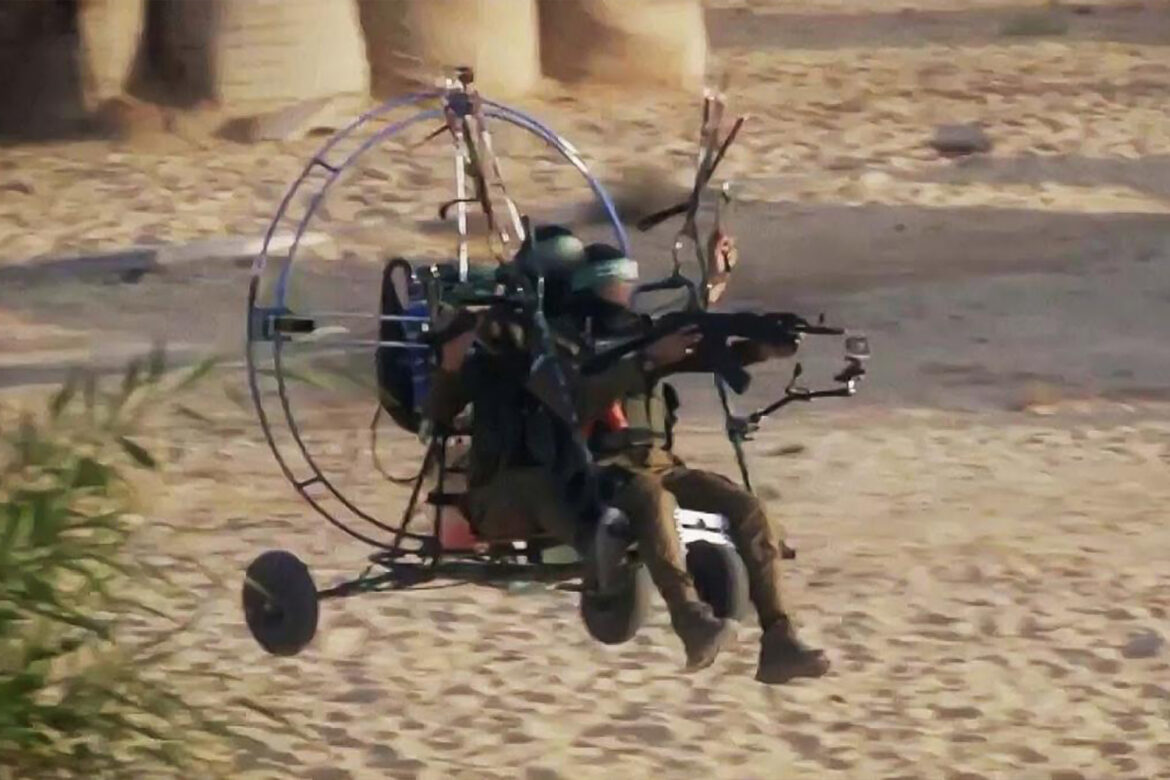10/12/2024–|Last updated: 10/12/202408:36 PM (Mecca time)
The New York Times revealed in a report published today, Saturday, that the plan of the Islamic Resistance Movement (Hamas) to carry out the Al-Aqsa Flood was ready in 2022, but the movement postponed carrying out the attack in light of communication with Hezbollah and Iran, according to documents quoted by the newspaper.
The New York Times relied on documents summarizing 10 meetings of Hamas leaders, which it said the Israeli army found inside a laptop it found in what it described as the movement’s command center in Khan Yunis in the southern Gaza Strip. It added that it confirmed their authenticity after speaking with former Hamas members and political analysts.
Postpone the attack
The documents stated that in June 2022, preparations for the attack were about a month away from completion.
The plan then included striking 46 sites where the Israeli army guarding the border operated, then targeting a major air base and intelligence center in southern Israel, in addition to cities and villages, which happened on October 7, 2023.
The newspaper said that the documents do not explain the reason for postponing the attack, but the recurring theme in them is the efforts of the Hamas leadership to mobilize support for the operation from Iran and Hezbollah.
Allied support
The documents stated that in July 2023, Hamas sent a high-ranking official to Lebanon, where he met with a senior Iranian commander and asked for help in striking sensitive sites at the beginning of the attack, which was called the “big project.”
The Iranian leader told Hamas that Iran and Hezbollah are supportive in principle, but they need more time, and the documents do not mention the detail of the plan that Hamas presented to its allies, according to the New York Times.
The documents state that Hamas planned to discuss the attack in more detail in a subsequent meeting with then-Hezbollah Secretary-General Hassan Nasrallah, but they do not clarify whether the discussion took place.
The documents showed that Hamas was assured of the public support of Iran and Hezbollah, but concluded that it needed to proceed without their full participation, in order to prevent Israel from deploying a new advanced air defense system before the attack occurred.
The documents said that Hamas leaders in Gaza informed the martyred leader, Ismail Haniyeh, about their plan, without clarifying the extent of the details he knew about.
Deception of Israel
The documents stated that Hamas has deliberately avoided major confrontations with Israel since 2021 to remain convinced that the movement does not want escalation.
But the documents indicated that Hamas “can no longer be patient” with Israeli violations in the West Bank and Al-Aqsa Mosque.
It also showed that the movement wanted to exploit the internal situation in Israel after the far right took power, and the unrest sparked by Israeli Prime Minister Benjamin Netanyahu’s plans to reform the judiciary.
Iranian denial
Speaking to the New York Times, Iran’s mission to the United Nations denied what was contained in the documents.
She said, “All planning, decision-making, and direction were taken by the military wing of Hamas based in Gaza, and any claim that attempts to link it to Iran or Hezbollah, either partially or completely, is devoid of credibility and comes from fabricated documents.”
Following the Al-Aqsa flood, Iran and Hezbollah denied their prior knowledge of the attack, and Hamas had not previously announced that it had informed Iran or Hezbollah of its plans, but the party announced on October 8, 2023, its support for Gaza, and Iran has repeatedly confirmed its continued support for the resistance factions.
Israeli failure
Following the discovery of the documents, the Israeli military concluded, in a separate internal report obtained by The New York Times, that the documents were authentic and represented another failure on the part of intelligence officials to prevent the attack on October 7, 2023.
The newspaper explained that the discovery of the documents raised accusations among the Israeli intelligence services as a result of the failure of Israeli spies to obtain them before Hamas launched its attack.
The Al-Aqsa Flood operation led to the death of about 1,200 Israelis, in addition to the injury of about 5,000 others, according to figures allowed to be published by the Home Front.



